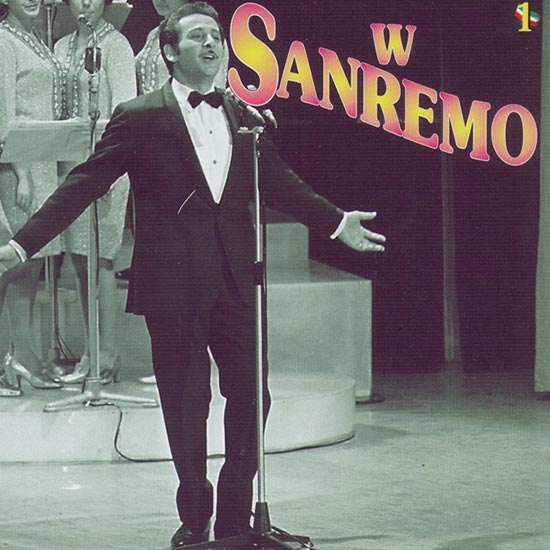SANREMO – THE 1950s

The Festival of Italian Song made its debut on January 29, 1951 at the Salone delle Feste of the Casino of Sanremo under the guidance of maestro Cinico Angelini. The songs in the competition were twenty, the artists only three: Nilla Pizzi, winner with Grazie dei fiori, Achille Togliani and Duo Fasano. The Italian public followed it thanks to the radio, which promoted the event.
1952 was the year of Trieste’s irredentism, and the widespread patriotic feeling resonated in the lyrics of the winner Vola colomba (Nilla Pizzi), while Papaveri e papere, second, would sell over a million records.
In 1953 the new generation arrived: Giorgio Consolini, Teddy Reno, Katina Ranieri. Viale d’autunno performed by the debutants Carla Boni and Flo Sandon’s scored the victory.
In 1954 the festival moved to television, which had started its broadcasts only a few weeks before. The edition of that year favoured the melodrama: Tutte le mamme (Consolini and Latilla) triumphed, while E la barca tornò sola came third, and survived in the ruthless parody by Renato Carosone. Other memorable songs included Canzone da due soldi, Aveva un bavero and Mogliettina.
In 1955 fortune smiled on Claudio Villa who won with Buongiorno tristezza.
The 1956 edition saw many changes: the contestants were the winners of a Rai competition for new voices and faces. Franca Raimondi won with Aprite le finestre.
In 1957 the Festival reverted to its old formula, and Villa repeated his success with Corde della mia chitarra. Among the popular songs were also Casetta in Canadà and Il pericolo numero uno.
Then the year of the turning point, 1958: Modugno’s unruly talent comes to the fore with Nel blu dipinto di blu. The hit would sell 22 million copies worldwide, and even top the US charts. It wasn’t an easy victory however, threatened right to the end by Nilla Pizzi with L’edera: not a simple clash between songs, but between two different worlds in the universe of entertainment. The Italian song was crossing the boundaries of its provincial atmosphere and addressing the whole world. In 1959 Modugno repeated his success with Piove, a further prelude to the new wind that would blow even stronger in the second decade of the Festival, the 1960s.
